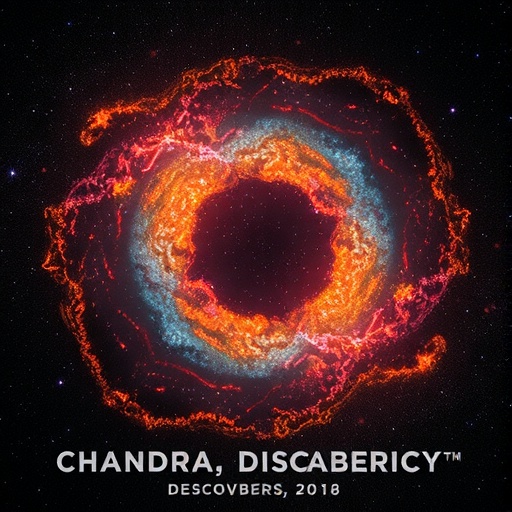For over a quarter of a century, the Chandra X-ray Observatory has stood as an unparalleled sentinel in the realm of high-energy astrophysics. Since its launch, Chandra has delivered an unprecedented angular resolution in the X-ray band, spanning energies roughly between 0.5 and 10 keV, which has revolutionized our understanding of some of the universe’s most energetic and enigmatic processes. The mission’s longevity, combined with its cutting-edge imaging and spectroscopic capabilities, has allowed it to sustain a pivotal role in uncovering phenomena that shape the cosmos, bridging multiple domains of astrophysical inquiry.
Chandra’s exquisite angular resolution stems from its finely honed optics, which allow it to pinpoint X-ray sources with sub-arcsecond precision. This capability has been transformative, enabling astronomers to resolve complex fields of sources that were previously considered blended or indistinguishable. By dissecting these crowded regions, Chandra has illuminated the discrete contributions from individual compact remnants, dense stellar clusters, and active galactic nuclei, hence providing clarity into the microphysical mechanisms at play in these environments.
One of the most vital contributions of the observatory has been its insights into compact astrophysical objects. These include neutron stars and black holes, remnants of massive stars that have undergone catastrophic explosions. Chandra’s observations have illuminated how these compact objects influence the dynamical and chemical evolution of their host galaxies. Through detailed spectral measurements and temporal monitoring, Chandra has revealed the accretion processes feeding these remnants, the relativistic jets they emit, and their feedback effects on surrounding interstellar gas.
Supernova remnants have also been a focal point for Chandra’s scientific output. These structures, the leftover debris of stellar explosions, serve as laboratories for extreme physics. With its high spatial and spectral resolution, Chandra can map the distribution of heavy elements synthesized during the supernova and trace shock fronts that heat and compress the ambient medium. Such studies have refined our models of nucleosynthesis and the energy budget involved in these cosmic blasts, enriching our understanding of how elements essential for life are disseminated across the galaxy.
Active galactic nuclei (AGN), powered by supermassive black holes at the cores of galaxies, have profited greatly from Chandra’s scrutiny. The observatory’s data have deciphered complex interactions between the central black holes’ energetic jets and the surrounding intergalactic medium. These interactions regulate galaxy growth by either triggering or suppressing star formation through heating or displacing gas. Chandra has thus been instrumental in probing the mechanisms behind galaxy cluster feedback and the co-evolution of black holes and their host galaxies.
The study of exoplanetary systems has emerged as another fascinating frontier enabled by Chandra’s observations. Young stars in these systems often exhibit intense stellar flares emitting strongly in X-rays, which can profoundly affect surrounding exoplanet atmospheres. Chandra’s monitoring has revealed how such high-energy emissions contribute to atmospheric erosion and chemical alterations, shedding light on the habitability conditions around various star types. These findings have crucial implications for the search for life beyond the solar system.
Chandra’s sustained mission duration has been invaluable for capturing time-domain phenomena in X-ray astronomy. Transient events such as gamma-ray bursts, tidal disruption events, and variability in AGN have been vigilantly tracked using Chandra’s sensitive instrumentation. Such temporal coverage has allowed astrophysicists to decode the physical processes governing the rapid release of energy and understand the transient universe’s dynamic nature.
Complementing other modern observatories, Chandra occupies a unique niche in multi-wavelength astronomy. Its X-ray data integrate seamlessly with observations from radio, optical, and infrared facilities, providing a holistic view of cosmic phenomena. This synergy has propelled breakthroughs in understanding the lifecycle of galaxies, star formation cycles, and the roles of dark matter in galaxy clusters through gravitational lensing signatures traced in X-rays.
Technically, Chandra’s imaging is powered by its High Resolution Mirror Assembly (HRMA), comprising nested cylindrical mirrors polished to near-perfect smoothness to focus X-rays with minimal scattering. The spacecraft’s detectors, including the Advanced CCD Imaging Spectrometer (ACIS) and the High Energy Transmission Grating Spectrometer (HETGS), facilitate both imaging and spectral analysis, enabling detailed compositional and kinematic studies of distant objects.
The mission’s endurance owes much to a combination of robust engineering and adaptive operational strategies. Chandra’s low Earth orbit and carefully designed thermal controls have ensured stable observational conditions, while its ground support teams have consistently managed spacecraft health and instrument calibrations—maximizing scientific output despite inevitable wear over decades.
Chandra has also been a prolific contributor to high-impact scientific literature, shaping the frameworks used by researchers worldwide. By providing direct observational evidence to test and refine astrophysical theories, the observatory has fostered a generation of discoveries that inform numerical simulations and theoretical models.
Looking forward, Chandra’s archives represent a treasure trove for future investigations, offering a temporal baseline against which new discoveries can be compared. Furthermore, planned upgrades and calibration improvements promise to extend its science capabilities, through enhanced detector sensitivity and refined data analysis techniques potentially based on machine learning.
Despite its age, Chandra’s contributions remain foundational in high-energy astrophysics, setting benchmarks for current and future X-ray missions like Athena and Lynx. Its legacy not only encompasses historic achievements but also charts a promising trajectory for continued discoveries in the decades ahead.
In sum, the Chandra X-ray Observatory epitomizes how a space-based platform dedicated to high-resolution X-ray astronomy can fundamentally alter our cosmic perspective. Through relentless observation, innovative instrumentation, and global collaboration, Chandra has illuminated the dark and dynamic universe, from black holes to starburst galaxies, thereby standing as a pillar in the edifice of modern astrophysics.
Subject of Research: X-ray astronomy, compact objects, supernova remnants, active galactic nuclei, exoplanet atmospheres, high-energy astrophysics
Article Title: 25 years of groundbreaking discoveries with Chandra
Article References:
Slane, P., Bogdán, Á. & Pooley, D. 25 years of groundbreaking discoveries with Chandra.
Nat Astron (2025). https://doi.org/10.1038/s41550-025-02675-8
Image Credits: AI Generated




